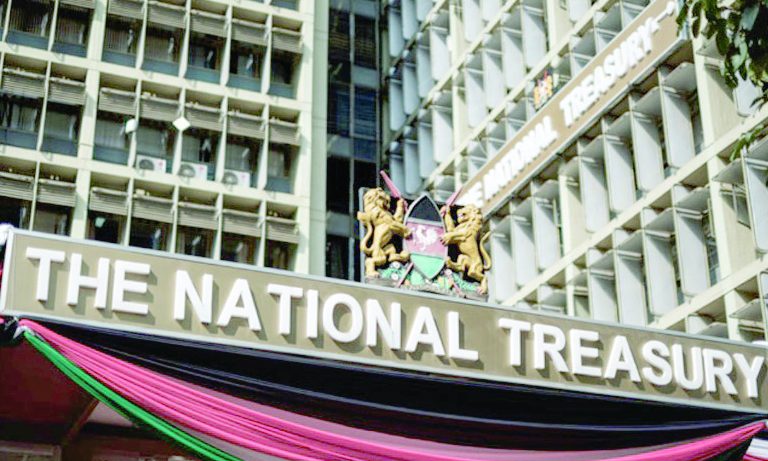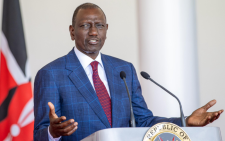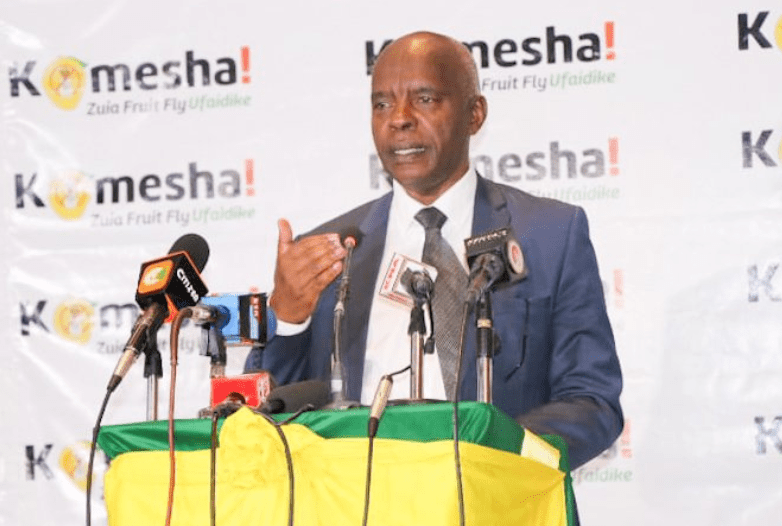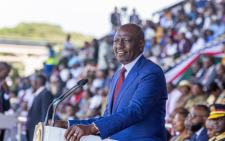2025/26 Budget: Heavy on salaries and debt, light on development

Kenya’s 2025/26 national budget may be the largest in the country’s history, totalling Ksh4.2 trillion, one touted to spur economic growth throughout the country.
However, the tough fiscal reality is that the government has little room to spur meaningful development as salaries and debt repayments will end up consuming most of taxpayers’ money.
According to the Institute of Economic Affairs (IEA), a massive Ksh1.72 trillion, or about 41 per cent of the total budget, will go towards recurrent expenditures such as paying civil servant salaries and administrative operations at the expense of development projects.
In stark contrast, only Ksh704.35 billion is allocated for development spending, a category that includes the construction of roads, schools, water, health infrastructure, and power projects.
“In the revised #Budget2025/26, Ksh1.72 trillion is set for recurrent spending (salaries, operations) while only Ksh704.35 billion goes to development (roads, infrastructure). #IEAKEBudget2025,” the economic experts observed through a post on X.
The imbalance sparks growing concern over the government’s inability to fund transformative projects at a time when Kenyans are grappling with the high cost of living and job scarcity.
Development projects go a long way towards job creation and generating money in the economy.
While this budget comes even as the government remains optimistic about the year ahead, warning signs are clear, raising alarm before the budget is read to the public.
The World Bank said in its latest report, ‘Beyond the Budget: Fiscal Policy for Growth and Jobs’, that Kenya is entering the 2025/26 fiscal year under a cloud of fiscal risks that may be repeated, as many of them were inherited from previous budget cycles.
This includes revenue shortfalls, high public debt, and underfunded development programs.
Much of the strain stems from past policy decisions that, while aimed at easing pressure on businesses and households, have undermined the government’s revenue base.
Debt burden
These include the reduction of corporate and individual income tax rates from 30 per cent to 25 per cent, lowering turnover tax for micro and small enterprises from three per cent to one per cent, and slashing VAT from 16 per cent to 14 per cent.
While well-intentioned, these changes have led to missed revenue targets, according to the World Bank.
The country’s debt burden is also casting a long shadow over the budget. Kenya faces Ksh1.1 trillion in debt servicing obligations in the coming year.
Much of this debt comprises non-concessional loans, borrowed at high interest rates and shorter maturity periods, intensifying pressure on public finances.
The World Bank and the IMF’s joint debt sustainability analysis, released in November 2024, classifies Kenya as high risk of debt distress, a sobering indicator of how constrained the country’s borrowing space has become.
Beyond the direct cost of loans, Kenya is also being dragged down by contingent liabilities from underperforming State-Owned Enterprises (SOEs) and ambitious Public-Private Partnerships (PPPs).
The government currently guarantees 100 per cent of principal and interest payments on loans taken by SOEs, even as many of these entities face cash flow challenges and struggle to meet short-term liabilities.
As of June 2024, 21 SOEs reported non-guaranteed debt equivalent to 0.5 per cent of GDP, a risk the State may still be forced to shoulder in the event of defaults.
Faced with these mounting risks, the World Bank is urging the government to strengthen its fiscal credibility.
“Kenya’s fiscal policy currently lacks credibility due to missed targets on both revenue and expenditure,” the report notes, warning that unpredictability erodes investor confidence and stalls long-term growth.
It recommends a reform agenda centred on strengthening governance, increasing equity in spending, and supporting job creation.
For the year ahead, the Treasury expects to raise Ksh3.3 trillion in total revenue, with Ksh2.8 trillion from ordinary tax collections and the remaining Ksh900 billion from grants and appropriations-in-aid.
But even this outlook is clouded by caution.
Appearing before Parliament’s Budget Committee on May 29, 2025, Treasury Principal Secretary Chris Kiptoo admitted that revenue shortfalls could disrupt budget execution.
As a precaution, the Treasury has already revised its revenue projections by Ksh145 billion.
Kiptoo assured lawmakers that the budget assumes a “realistic” annual revenue growth of 8.1 per cent, which still lags behind the expected nominal GDP growth of 10.5 per cent.
To bridge the gap, the government plans to intensify tax compliance, leverage digital tools, and broaden the tax base.
Still, critics argue that some tax proposals in the Finance Bill 2025 may be self-defeating, risking the very economic vitality needed to generate revenue.
Business leaders, civil society groups and ordinary citizens have expressed concern about policies that could burden low and middle-income earners.
Another looming challenge is the volatility of interest rates, which could spike borrowing costs and add further strain to an already burdened exchequer.
“Unpredictable interest rate movements may result in an increase in new debt with short-term maturities, thereby heightening refinancing risk,” Kiptoo said, adding that the government must now “live within its means.”
The government anticipates a fiscal risk associated with public debt, where there is a risk of reversal in interest rates, which largely determine the level of the debt service.
“The unpredictability of interest rate movements may result in a rise in new debt with short-term maturities, thereby heightening refinancing risk,” he said.
Costly corruption
As a mitigation strategy, the government will be compelled to live within its means to avoid overreliance on loans and cut corruption absolutely.
Corruption remains one of the most formidable obstacles to Kenya’s economic growth, undermining public trust, distorting resource allocation, and inflating the cost of doing business.
Despite decades of anti-graft rhetoric and the establishment of oversight institutions, the vice continues to drain billions from the public coffers annually.
According to the Ethics and Anti-Corruption Commission, Kenya loses an estimated Ksh700 billion annually to corruption—nearly a fifth of the national budget.














